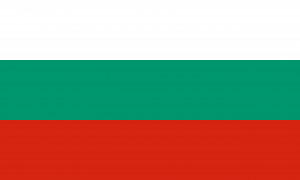Language/Bulgarian/Pronunciation/Palatalization
Palatalization. Most consonants in Bulgarian occur in both palatalized and non-palatalized varieties.
What is Palatalization?
A palatalized consonant is one produced at the same primary point of articulation and with the same manner of articulation as its non-palatalized counterpart, but is given a secondary point of articulation by raising the tongue toward the palate as one does when pronouncing the y-glide й.
This produces an effect on the sound quality that is sometimes described as “softening”, and palatalized consonants are sometimes referred to as “soft consonants”.
Thus [д’] is a stop formed through closure at the dental point of articulation, but has a softened quality due to the palatalization created by raising the tongue toward the palate.
Already being palatal in primary point of articulation, the consonants ч, дж, ш, ж and й are not subject in Bulgarian to the palatalized – non-palatalized distinction.
Palatalized consonants occur only before non-front vowels in contemporary Bulgarian (where non-palatalized consonants also may occur).
History
During the course of the history of the language any palatalized consonants that once were found before front vowels, before other consonants or in word-final position underwent a hardening (i.e. a loss of palatalization).
Note
Note, for example, the distribution of [л] and [л’] in the following words: учител [учитил] ‘teacher’, учителят [учитил’ът] ‘the teacher’, учителю [учитил’у] ‘teacher (vocative)’, учители [учитили] ‘teachers’ and учителка [учитилкъ] ‘teacher (feminine)’; and of [н] and [н’] in the following words: син [син] ‘blue (masculine singular) ’, синя [син’ъ] ‘blue (feminine singular)’, синьо [син’у] ‘blue (neuter singular)’, сини [сини] ‘blue (plural)’ and синкав [синкъф] ‘bluish (masculine singular)’.
Sources
http://www.seelrc.org:8080/grammar/pdf/stand_alone_bulgarian.pdf

